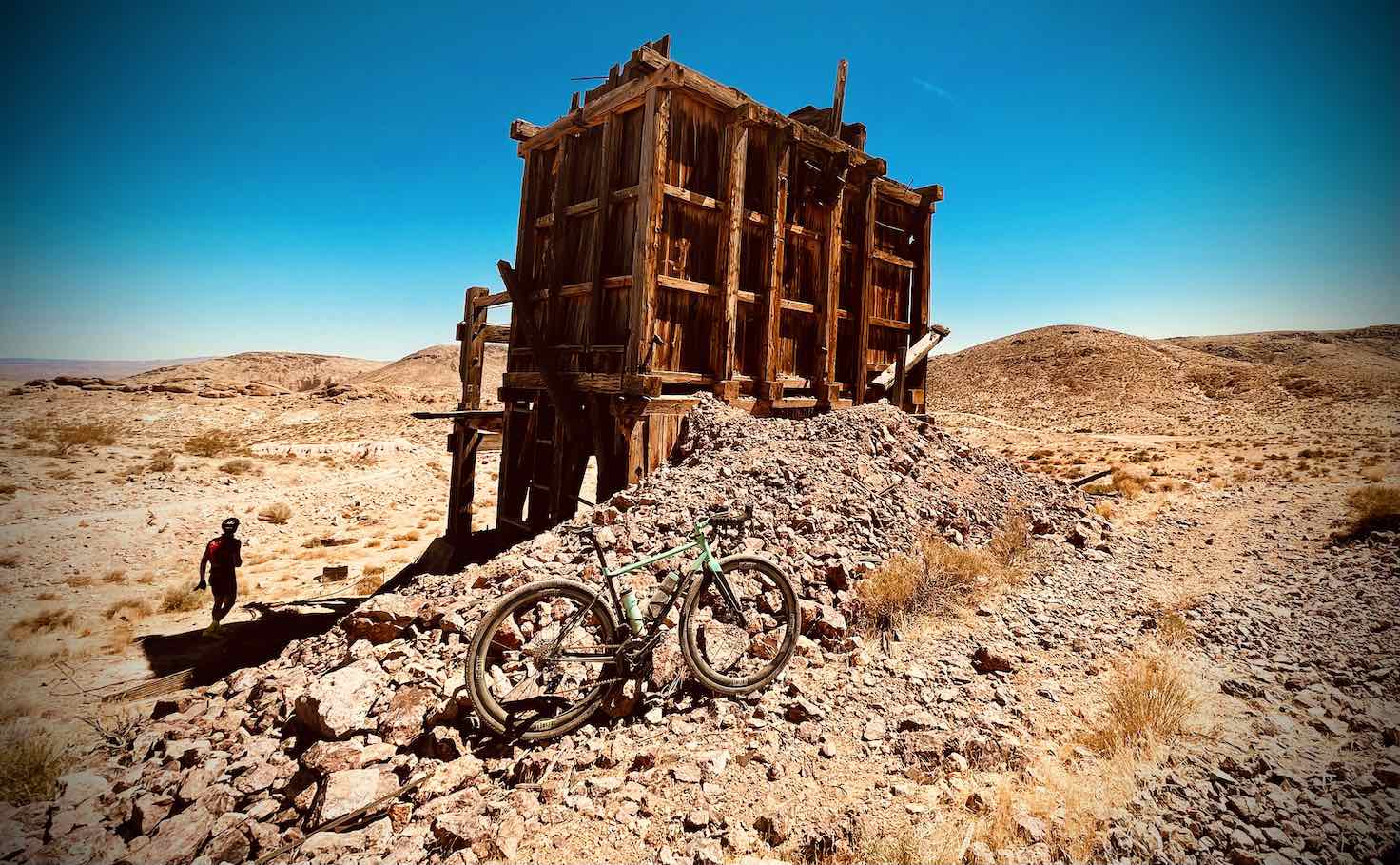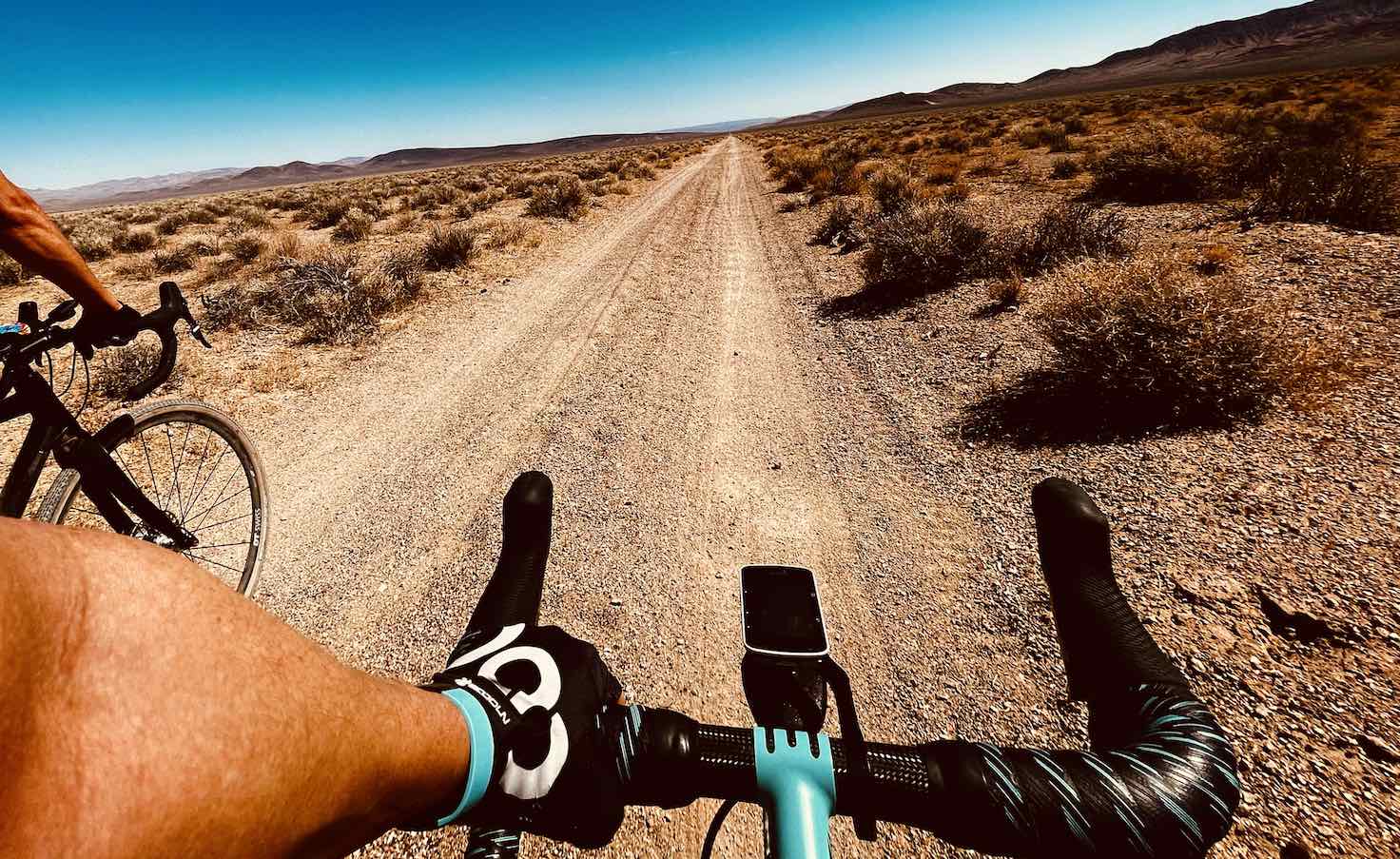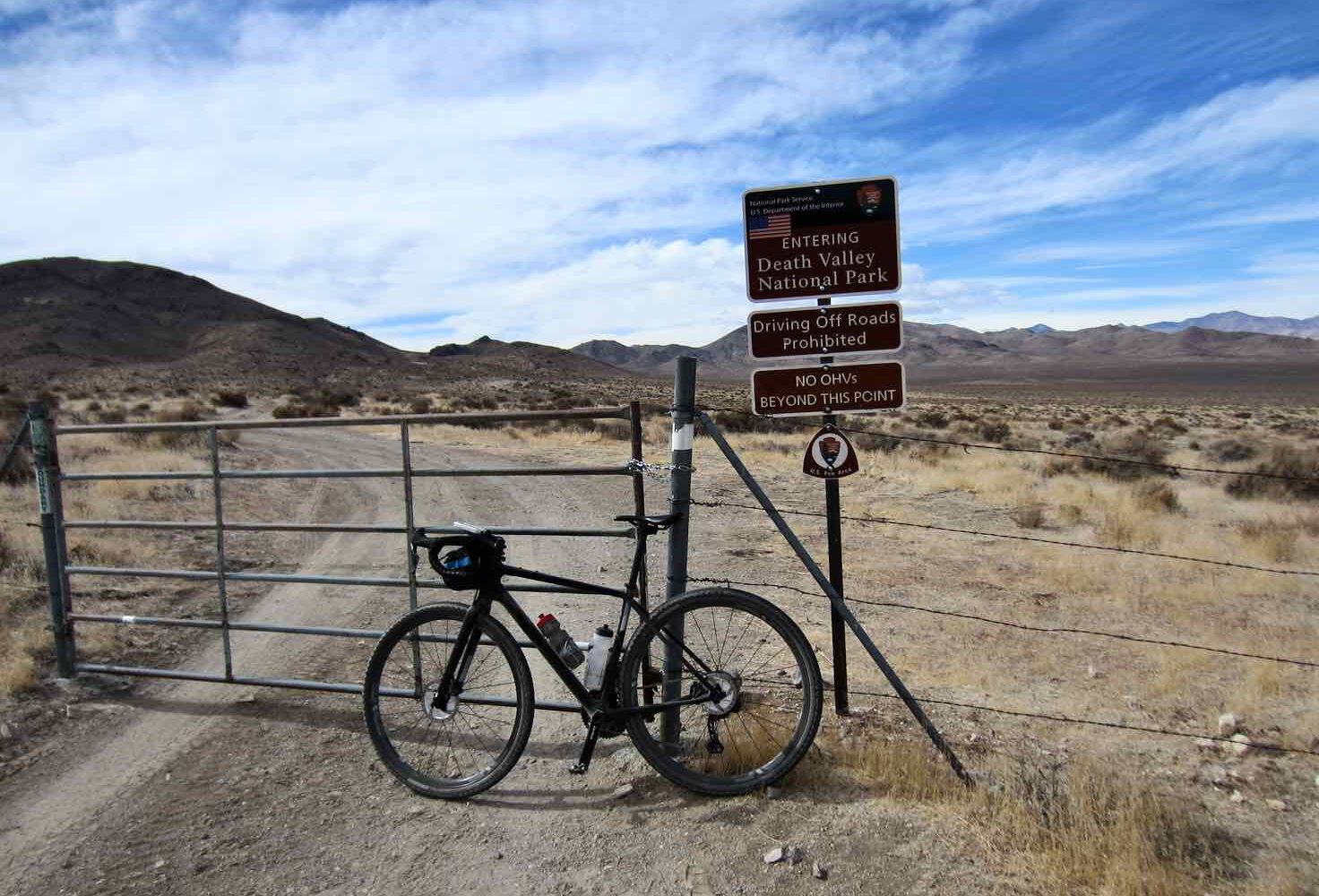Rhyolite Rumble
Caution! We do not provide turn-by-turn directions in our GPX files. Those are auto-generated by your bike computer and are usually less than 70% accurate. Learn more.
For help loading a GPX file onto your bike computer, go here.
DownloadHighlights & Remarkable Spots
Spicer Ranch Trail System / ~ Start of Route
A 320-acre working ranch that is open to the public and features mountain bike / hiking trails, camping, restrooms and showers at the trailhead. The owner of the ranch, David Spicer is also the inspiration for the trail system and is host to a restoration habitat for the Amargosa toad, a species unique to the Oasis Valley of Nevada. He believes in stewardship of the land and making it accessible for all to enjoy.
Bullfrog Hills / ~ miles 1 to 11 and miles 33 to 45
After leaving the ranch, you climb up Pioneer Road up into the Bullfrog Hills (named after the Amargosa Toad, found on the ranch as well as other wetlands in the Amargosa Valley). Here are relics of 1900’s mining operations, like the hoppers of the Mayflower Mine, still in great condition.
The Amargosa toad occurs only in Oasis Valley, Nevada, specifically along a 10-mile stretch of the Amargosa River and upland springs. The Town of Beatty occurs at the southern end of the toad’s range.
The Ghost Town of Pioneer / ~ mile 6
You then go by the townsite of Pioneer, with some relics left, like timber, metal, cans, glass, and an old bank safe. Follow the old stagecoach road around to the north, then drop down to Stozzi Ranch Road, and arrow-straight road that crosses the desolate Sarcobatus Flats. Dave would say if you got lost out there it would make you insane!
The Old Railroad Beds / ~ miles 20 to 25
Then we turn south onto the old Goldfield Consolidated railroad bed, the line that serviced the town and mines of Rhyolite. We actually enter Death Valley NP for this section. It’s a bit more climbing, then a fast descent, riding on top of these old railroad fills and through railroad cuts, marveling at the amount of work it took to build this RR.
Goldwell Open Air Museum / ~ mile 33.5
Just before you get to Rhyolite, you’ll be at the Goldwell Open Air Museum. Be sure to plan some time to stop and look around! Goldwell Open Air Museum’s art consists of seven outdoor sculptures that are colossal not only in their scale but in their placement within the vast upper Mojave desert. A group of prominent Belgian artists, led by the late Albert Szukalski, created a variety of permanent artworks for everyone to enjoy and see. Free self-guided tour brochure available and donations appreciated. [Goldwell Open Air Museum]
Tom Kelly's Bottle House / ~ mile 33.6
mortar. The unique home was completed in about a year and a half and still stands today. The only source of lumber in the area at the time was the ill-suited Joshua Tree, hence some creativity for a solution was found at the bottom of a bottle of beer. [Atlas Obscura]
Rhyolite Ghost Town / ~ mile 34
The now ghost town of Rhyolite began in 1905 when two prospectors found an abundance of gold within quartz rock. In six months the two-tent mining camp soon boomed to an estimated 5,000 people. There were over 2000 claims and a townsite was laid out nearby and given the name Rhyolite from the silica-rich volcanic rock in the area.
At its peak population up to 10,000 people resided in Rhyolite, but the mining boom was short and the town was mostly abandoned in 1916. Partial buildings of the community are still standing and it is worth planning an hour or so for a tour around this iconic mining town.
Credits & Acknowledgements
Route, description, and media by Mark Duncan of Team Hammersaw.
When We Like to Ride This
October to April, when the temperatures are reasonable.
Terrain & Riding
It’s a fantastic route, with the right amount of toughness, fun, scenery, and history. A real wild west adventure!
The route is pretty much 100% dirt, some smooth, some rough. The climbing isn’t bad overall, just some steep punchy stuff.
After leaving Rhyolite and the railroad beds you turn back up into the Bullfrog Hills, up and over 3 steep stout climbs Dave (see panel to right) likes to call the “Jackass Passes’! But the scenery is otherworldly, with so many different rock formations and colors.
Making your way back to the ranch, you pass two fresh springs that Dave has improved and renovated, not only for roaming burros but for riders. These springs run year-round. Since the water comes right out from the ground, he says you don’t even need to treat it. I had some and it was delicious.
The Start
Spicer Ranch Trailhead. Camping/RV area with bathrooms and showers.
Food & Water
- None
Route Notes
There is a short section of steep, rutted, rocky pitches and primitive roads with some sandy areas and washouts, but still rideable. National Park backcountry – be prepared for remote conditions and limited cell phone coverage.
The Beatty area is classic Southwest desert riding with more of a jeep road feel than a classic gravel road; it can vary from hard-pack with embedded rock to loose and course to soft wash sand and washboard. The surfaces are ever changing based on based on maintenance, rains, and time of year. Thus, error on the side of too much tire, rather than not enough. We recommend 700c X 50 mm or 650b X 2.1” tires or larger and an adventure gravel bike versus a more traditional all road gravel bike. Larger, softer tires will handle the wash best.
Please respect the fragile environment and private property when visiting the area.
Our friends at Beer, Bikes and Campfires have written an excellent article about the Spicer Ranch, check it out!
We recommend a red blinky light with rear looking radar detector (i.e. Garmin Varia)















 Behind every route is scouting, mapping, storytelling, and a whole lot of pedal power.
Behind every route is scouting, mapping, storytelling, and a whole lot of pedal power.
Have you ridden this route? Got a question? Join the discussion!